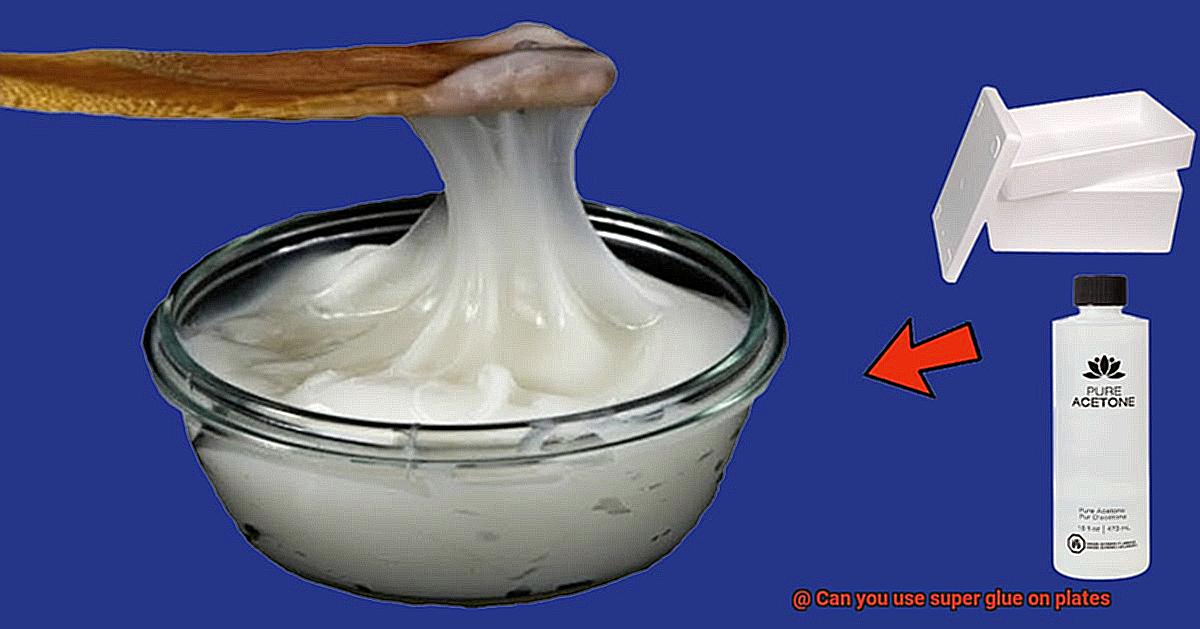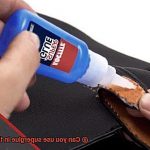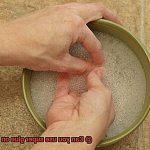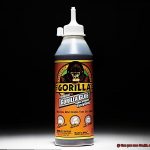Picture this: your beloved porcelain plate slips from your grasp, shattering into countless fragments on the floor. It’s a heart-wrenching sight, especially if that plate holds sentimental value or is an heirloom passed down through generations. In moments like these, the idea of using super glue to piece it back together may cross your mind. But can you really use super glue on plates? Let’s dive into this creative repair method and explore its advantages and potential pitfalls.
Advantages of using super glue on plates:
- Lightning-fast and rock-solid fix: Super glue is famous for its incredible bonding properties. With just a few drops, it can securely join broken plate pieces, restoring functionality almost instantly. When applied correctly, it creates a bond that can withstand regular use and washing without breaking a sweat.
- Wallet-friendly solution: Replacing a broken plate can be quite the expense, especially if it belongs to a valuable set or has sentimental value. Opting for super glue as a repair option allows you to save some cash while extending the lifespan of your favorite dishes.
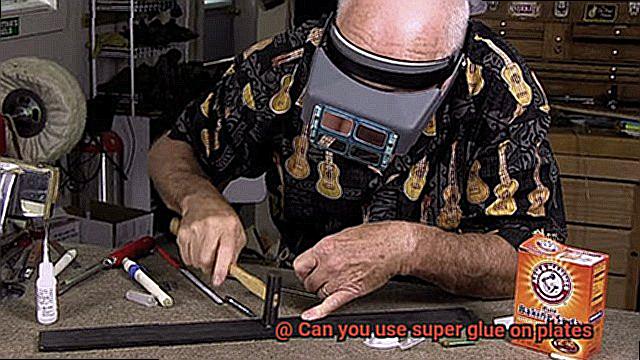
Disadvantages and safety precautions:
- Aesthetics and functionality trade-offs: While super glue can work wonders in mending broken plates, it’s important to note that the repaired areas may not look exactly like they did before the accident. The adhesive might leave visible marks or alter the plate’s texture, compromising its original aesthetics. Additionally, keep in mind that super glue is not heat resistant, so it might not be suitable for plates intended for microwave or oven use.
- Safety first: Before embarking on any repair project involving super glue, take proper safety precautions. This adhesive contains chemicals that could irritate your skin or stick to it like nobody’s business. Don’t forget to wear protective gloves, work in a well-ventilated area, and avoid direct contact with the glue.
What is Super Glue?
Contents
- 1 What is Super Glue?
- 2 Types of Plates and Considerations
- 3 Using Super Glue on Ceramic or Porcelain Plates
- 4 Using Super Glue on Glass Plates
- 5 Using Super Glue on Plastic Plates
- 6 Preparing the Plate Surface for Adhesion
- 7 Safety Precautions When Working with Super Glue
- 8 Alternatives to Super Glue for Plate Repair
- 9 Conclusion
Super glue, also known as cyanoacrylate adhesive, is a remarkable adhesive that has been used for decades to bond materials together. It was originally discovered by Dr. Harry Coover in the 1940s while he was working on developing clear plastic gun sights during World War II. However, he soon realized that the substance he had created had an extraordinary adhesive power.
One of the standout characteristics of super glue is its rapid bonding capability. Within just a few seconds of applying the glue, it starts to set and form a strong bond. This instant adhesion makes it perfect for quick repairs and projects that require immediate results.
Super glue is also known for its exceptional strength and durability. Once it has fully cured, it forms a tough and rigid bond that can withstand significant stress and strain. Whether you need to fix a broken item or bond materials in industrial settings, super glue can handle the job.
In addition to its strength, super glue is resistant to temperature changes and various chemicals. It can endure extreme cold and heat without losing its bond strength. This means that you can rely on super glue to hold up even in harsh conditions. However, it’s important to note that prolonged exposure to moisture can weaken the bond over time.
Super glue comes in different formulations and viscosities to suit various applications. There are variations designed specifically for porous materials like wood, as well as specialized formulas for bonding plastics, metals, ceramics, and more. This makes it easy to find the right super glue for your specific needs.
While super glue offers numerous advantages, it’s essential to handle it with care due to its strong adhesive properties. It can bond skin together almost instantly, so direct contact should be avoided. If accidental skin contact occurs, it can be removed by soaking in warm, soapy water or using an acetone-based nail polish remover.
Types of Plates and Considerations
Today, we will explore the different types of plates and important considerations to keep in mind when using super glue on them. Get ready to dive into this adhesive adventure.
Ceramic Plates:
Imagine a plate made from clay, fired at high temperatures—a ceramic plate. Super glue is generally safe and effective for repairing ceramic plates. However, be cautious about using food-safe glue to avoid any harm when consuming meals. Look for glues specifically labeled as food-safe for a secure and enjoyable dining experience.
Porcelain Plates:
Porcelain plates are delicate beauties in the plate world. They are crafted from kaolin clay, giving them their translucent appearance. When using super glue on porcelain plates, extra care is necessary as they can easily chip or break. Apply a small amount of glue precisely, ensuring it dries clear to maintain the seamless repair.
Glass Plates:
Glass plates create a magical dining experience, accentuating the presentation of your food. However, using regular super glue may not provide a strong bond on glass surfaces. Look for specialized glass bonding glues to wield your secret weapon for sturdy repairs. These glues are designed to create a powerful bond while being resistant to moisture and heat.
Plastic Plates:
Plastic plates are lightweight and perfect for picnics or parties. However, not all plastics are compatible with super glue. Certain plastics may resist bonding or result in weak adhesion. Always check the label and choose a glue that is compatible with the specific type of plastic used in your plates.
Considerations:
Now, let’s delve into important considerations before embarking on your plate-repairing journey:
- Food Safety: No one wants a side of glue with their meal. Ensure that the glue you use is food-safe and non-toxic to avoid any health hazards or unpleasant taste.
- Heat Resistance: Plates can experience high temperatures, especially in microwaves or dishwashers. Check that the glue you choose can withstand heat without compromising the integrity of your repair.
- Dishwasher and Microwave Safety: If you plan to clean or heat your plates in a dishwasher or microwave, ensure that the glue is dishwasher and microwave safe. This prevents the glue from washing away or releasing any harmful fumes during use.
Using Super Glue on Ceramic or Porcelain Plates
We’ve all experienced that heart-stopping moment when our beloved ceramic or porcelain plate slips through our fingers and shatters into a million heartbreaking pieces. But fear not, my friends, for there is a hero among us – super glue. In this guide, we shall embark on a journey through the realm of super glue and its magical ability to mend our broken plates, restoring them to their former glory.
First, let’s delve into the world of super glue. Picture this: cyanoacrylate-based glues with their super-strong bonding properties and lightning-fast drying time. These glues are the knights in shining armor we’ve been searching for – perfect for reuniting those broken plate pieces seamlessly.
But before we embark on our gluing adventure, we must prepare our wounded warriors. Start by giving your broken or chipped plate a thorough cleaning, banishing any dirt, grease, or debris that may hinder the bonding process. And here’s a pro tip for you – gently sand down the edges of the broken pieces. It’s like laying the foundation for a sturdy castle – giving your glue a helping hand.
Now, it’s time to unleash the power of the super glue. Remember, my friends, a little goes a long way. Apply a small amount of glue evenly on both sides of the broken pieces. Press them together firmly, feeling the bond forming with each passing second. Ah, patience is indeed a virtue – allow your glued plate to rest undisturbed for up to 24 hours, ensuring an unbreakable bond. Trust me, my friends, this wait shall be rewarded.
But hold on, brave ones. Safety is paramount in this quest. When working with super glue, make sure you find solace in a well-ventilated area to avoid inhaling any fumes that may cloud your judgment. And I implore you, whatever you do, keep this magical elixir away from your precious skin and eyes – for no one desires their fingers to be glued together. And let us not forget our little ones, who are drawn to the mysteries of the world – keep this enchanting glue away from their curious hands.
Now, let us address the tales of heat resistance and food safety. Alas, most super glues are not designed for the scorching flames of the microwave or oven, nor the roaring tides of the dishwasher. It is best to keep your repaired plates far away from these treacherous realms. And when it comes to the feast that shall grace your repaired plate, my friends, ensure no trace of glue residue remains on the surface that shall meet your delectable meals.
Using Super Glue on Glass Plates
Whether you’re fixing a broken plate or working on a creative project, super glue can be a handy tool. However, it’s important to follow a few steps to ensure a successful bond and avoid any mishaps. So, let’s get started.
- Clean and dry the glass plates: Before applying super glue, make sure the glass plates are clean and dry. Any dirt, grease, or moisture can interfere with the bonding process. Use a mild detergent or glass cleaner and a soft cloth or sponge to clean the plates. Rinse them thoroughly and allow them to dry completely before moving on to the next step.
- Apply the super glue: Less is more when it comes to applying super glue on glass plates. Apply thin layers of glue to achieve better adhesion. Avoid using an excessive amount of glue as it can create a messy situation.
- Hold the pieces together: Once you’ve applied the glue, firmly hold the pieces together for at least 30 seconds. This allows the adhesive to bond properly. For larger or heavier plates, you may need to use clamps or other means of support to ensure a secure bond.
- Work efficiently: Super glue dries quickly, so work efficiently and accurately. Once dry, it forms a strong bond that can be difficult to remove or adjust. Take care not to get any excess glue on visible areas of the glass plates.
- Remove excess glue: If any excess glue spills over onto visible areas of the glass plates, don’t panic. You can use acetone or nail polish remover to remove it. However, be cautious as these substances may damage certain types of glass finishes.
- Consider food safety: Super glue may not be suitable for glass plates that will come into contact with food or beverages. While it is generally considered non-toxic once cured, there may still be potential health concerns if ingested.
- Assess durability: If you’re using super glue to repair a broken glass plate, consider the structural integrity of the repair. Super glue may not provide enough strength for heavy-duty use, such as serving hot meals or carrying heavy objects. In such cases, it might be better to explore other adhesive options like specialized glass adhesives or epoxy for more durable and long-lasting bonding solutions.
- Test a small area: Before applying super glue to the entire surface of your glass plates, it’s always a good idea to test a small, inconspicuous area first. This allows you to assess the effectiveness of the glue and ensure it doesn’t cause any unwanted damage or discoloration.
Using Super Glue on Plastic Plates
When your favorite plastic plate shatters into pieces, don’t despair. With the right technique and a little super glue, you can easily repair it. In this step-by-step guide, we’ll walk you through the best practices for using super glue on plastic plates, ensuring a strong and long-lasting bond.
Step 1: Assess the Plastic Type
Before you start the repair process, make sure your plastic plate is suitable for super glue. Not all plastics are compatible, so check the label or consult the manufacturer’s instructions to ensure that super glue is safe to use on your plate.
Step 2: Clean the Surface
Thoroughly clean the surface of the plastic plate to remove any dirt, dust, or residue. Use a mild detergent and warm water to gently wash the plate, then rinse it well and ensure it is completely dry before moving on. This step is vital for achieving a strong bond between the surfaces.
Step 3: Roughen the Surface
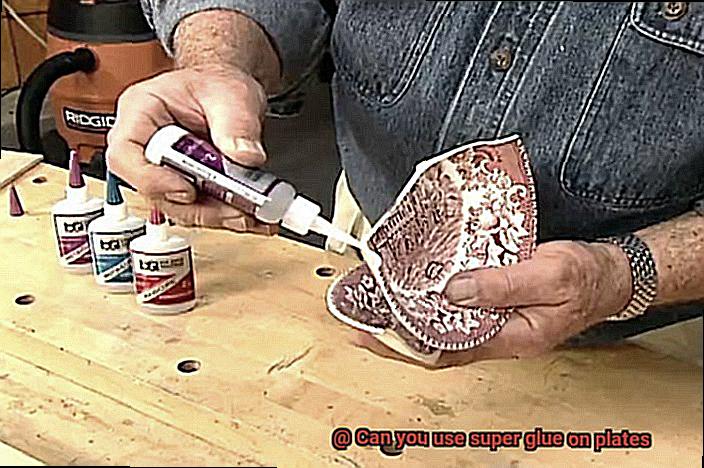
To enhance adhesion between the plastic and the glue, lightly sand the area where the glue will be applied using fine-grit sandpaper. Be careful not to sand too aggressively, as this can weaken or damage the plastic.
Step 4: Apply Super Glue
Apply a small amount of super glue to one of the surfaces that need to be bonded. Remember, less is more. Use a toothpick or a small applicator brush to spread the glue evenly. Avoid excessive amounts of glue as it can create a messy appearance and increase the risk of seepage.
Step 5: Align and Press
Carefully align the broken pieces and firmly press them together. Hold them in place for a few minutes to allow the adhesive to cure and create a strong bond. Follow the manufacturer’s instructions regarding curing time and any additional steps required.
Step 6: Handle with Care
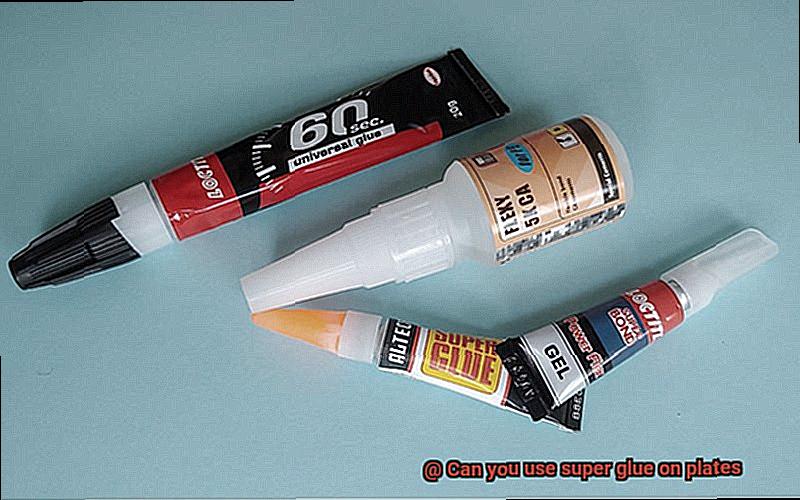
Once the super glue has cured, handle the repaired plastic plate with care. While super glue provides a strong bond, it may not be as durable as the original material. Avoid subjecting the repaired area to excessive stress or impact, as this could weaken the bond and cause the repair to fail.
Step 7: Clean Up Excess Glue
If any excess glue seeps out from the joint, act quickly to remove it. Use a cotton swab or a toothpick dipped in acetone or nail polish remover to dissolve and remove dried super glue. Test a small, inconspicuous area first to ensure that the solvent does not damage or discolor the plastic.
Preparing the Plate Surface for Adhesion
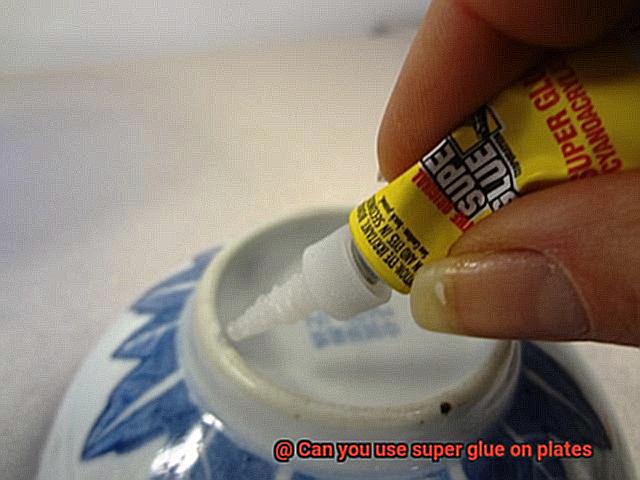
In this comprehensive guide, we will delve into the art of preparing the plate surface for optimal adhesion. Get ready to unleash your gluing skills.
Step 1: Cleanliness is Key
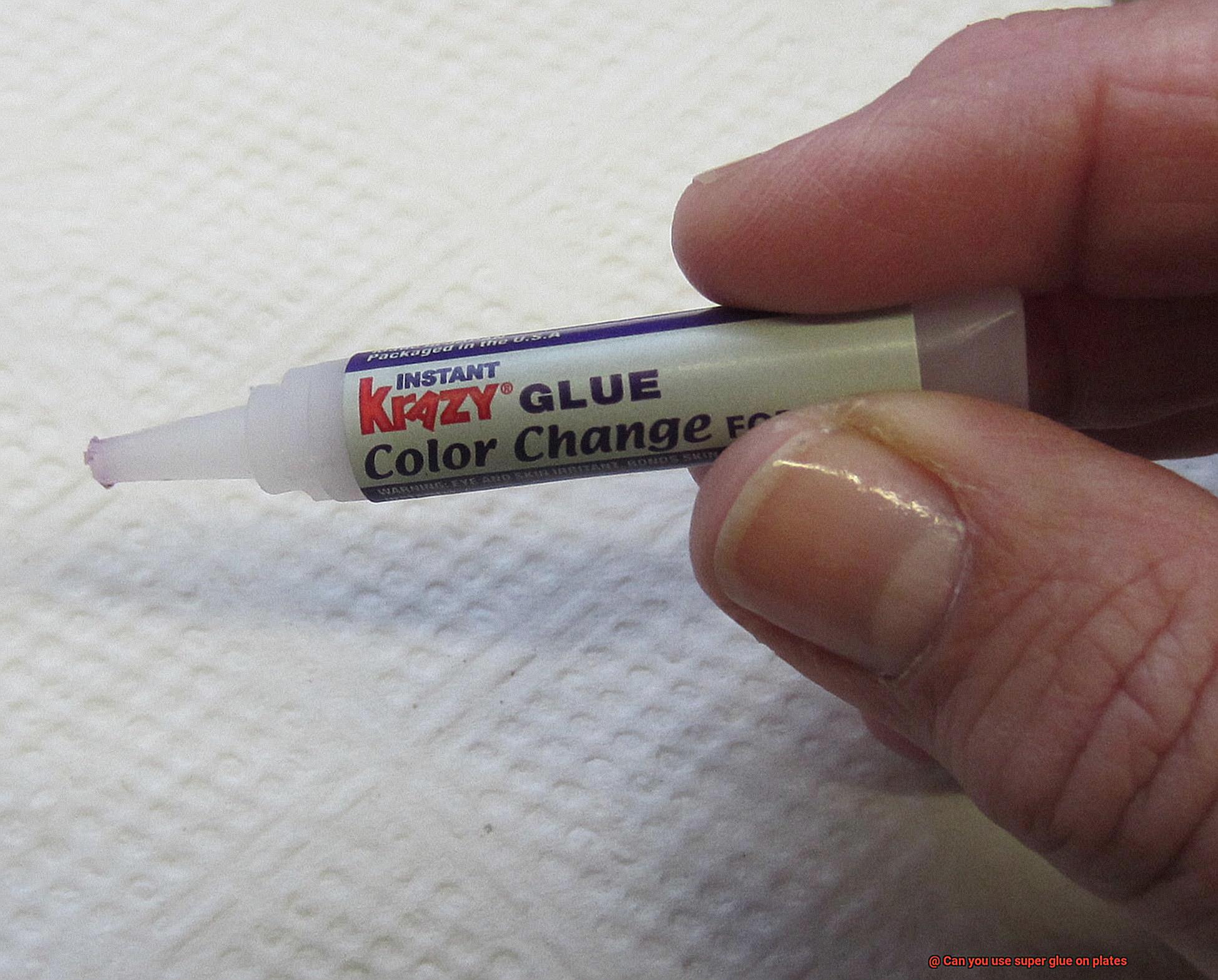
Before embarking on the gluing process, cleanliness is paramount. Rid your plate surface of any dirt, grease, or residue that may hinder the bonding process. Using a mild detergent or dish soap and water solution, gently scrub the surface with a soft brush or sponge. Rinse thoroughly with clean water and allow your plate to bask in the glory of complete dryness.
Step 2: Roughen Up the Surface
To amplify adhesion, it’s time to get rough. Lightly sand the plate surface with fine-grit sandpaper or embrace the power of specialized abrasive pads. This step creates a slightly roughened texture, providing ample surface area for the adhesive to cling onto. Remember to sweep away any dust or debris generated during this process with a clean cloth or a burst of compressed air.
Step 3: Primer Power
Boosting adhesion to new heights requires the application of a trusty primer or adhesion promoter. These magical substances facilitate chemical bonding between the adhesive and the plate surface while safeguarding against potential interference. Choose a primer compatible with both your plate material and super glue. Follow the manufacturer’s instructions, applying an even and thin coat that dries to perfection.
Step 4: Special Surfaces Need Extra Love
Certain plastics or porous materials demand extra attention for a rock-solid bond. Unlock their true potential by incorporating special bonding agents or adhesive activators. These supercharged products elevate bonding performance, ensuring an unbreakable connection with the super glue. Say goodbye to weak and flimsy bonds.
Step 5: Apply the Super Glue
Before diving into the super glue application, arm yourself with knowledge. Familiarize yourself with the manufacturer’s instructions, as different types of super glue may have specific application guidelines and cure times for optimal results. With confidence, apply a thin and even layer of super glue to the prepared plate surface, ensuring complete coverage of the bonding area.
Step 6: Time to Bond
The moment of truth has arrived. Align the surfaces and press them together with conviction, exerting firm and even pressure for a few exhilarating seconds. Take care not to cross the line into excessive force that could shatter your plate dreams. Allow ample time for the super glue to cure and achieve its full strength, securing an everlasting bond.
Safety Precautions When Working with Super Glue
Super glue is a powerful adhesive that can bond objects together in an instant. However, it’s important to remember that great power requires great responsibility. Taking proper safety precautions is crucial when working with super glue to prevent accidents and protect yourself and those around you. In this article, we will explore the essential safety measures you should follow when handling super glue.
Wear Protective Gloves:
Always wear protective gloves when working with super glue to prevent accidental skin bonding. Choose gloves that are resistant to chemicals and ensure they fit well to provide adequate protection.
Work in a Well-Ventilated Area:
Super glue emits fumes that can irritate your eyes, nose, and throat. To minimize exposure, work in a well-ventilated area. Open windows or use a fan to disperse the fumes effectively, creating a safer working environment and reducing the risk of respiratory discomfort.
Avoid Inhaling Fumes:
To prevent respiratory irritation and discomfort, try to avoid inhaling super glue fumes directly. Wear a mask or work in an area with good airflow to protect yourself from potential harm.
Keep Super Glue Out of Reach:
Store super glue in a secure location, away from children and pets. Accidental ingestion can lead to serious health issues as super glue is toxic when consumed. Proper storage prevents any accidental access.
Follow Manufacturer’s Instructions:
Read and follow the manufacturer’s instructions for each type of super glue you use. Different glues may have specific application instructions and curing times. Following these instructions ensures safe and effective use for optimal results.
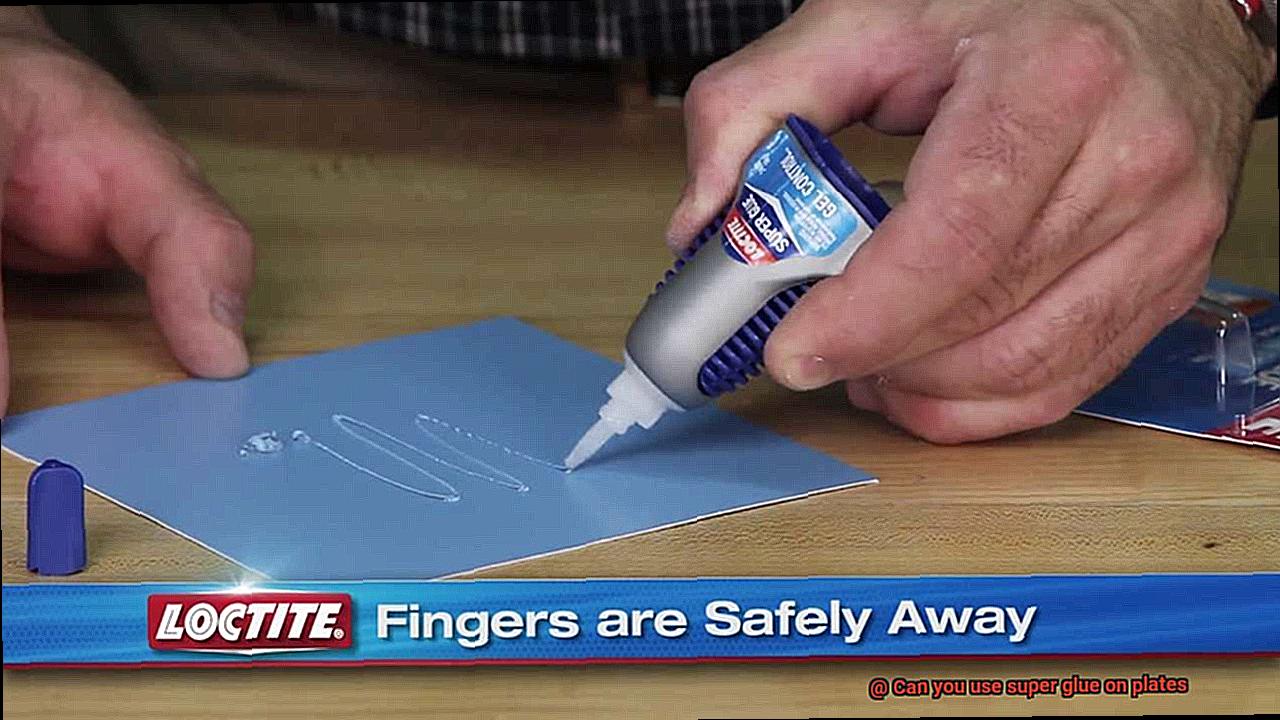
Handle Accidental Skin Contact with Care:
If super glue accidentally gets on your skin, do not forcefully pull the bonded skin apart. Instead, soak the affected area in warm soapy water or use acetone to gradually dissolve the bond. Seek medical attention if necessary.
Clean Up Spills Promptly:
Super glue adheres quickly to surfaces, making it challenging to remove once dried. Clean up any spills or excess glue promptly to prevent unwanted bonding. Use acetone or a specialized adhesive remover to effectively remove the glue from surfaces.
Alternatives to Super Glue for Plate Repair
I’m here to share some exciting alternatives that will blow your mind. Buckle up and get ready to explore the world beyond super glue.
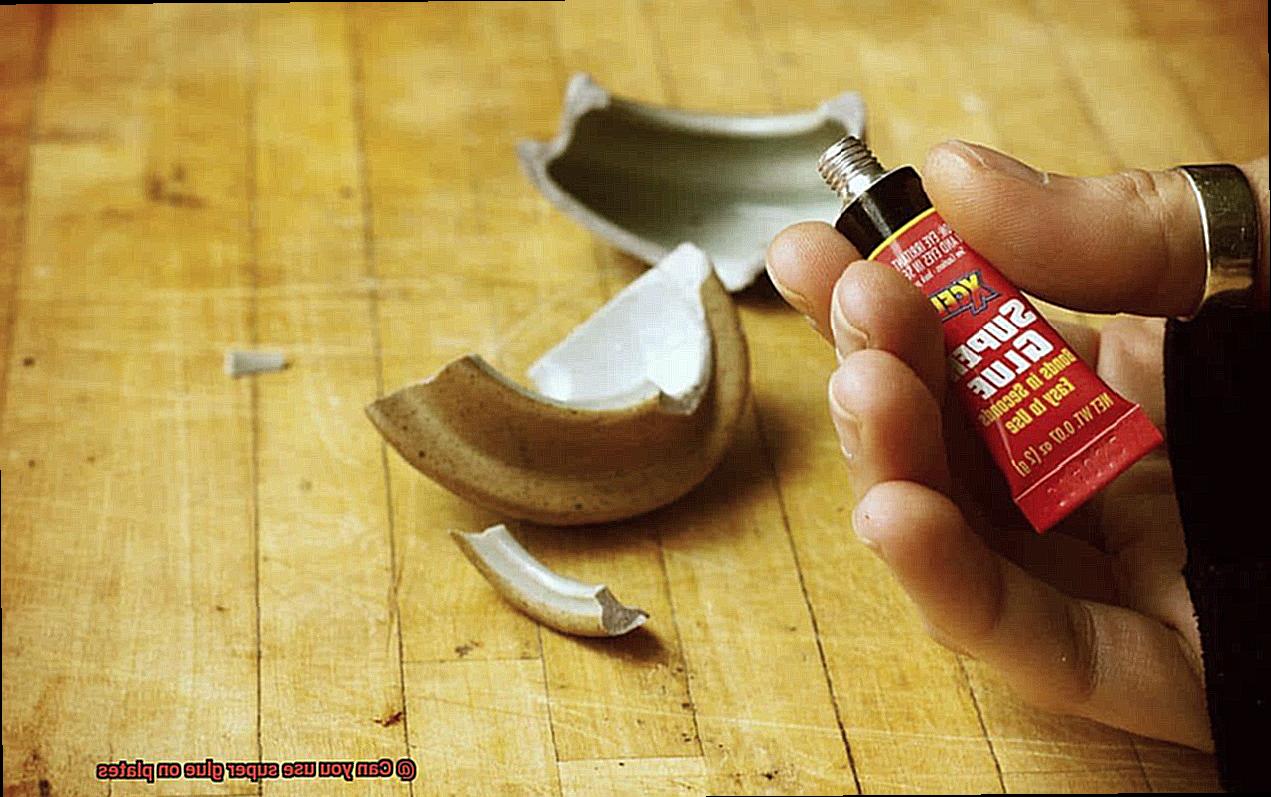
First up on our journey is epoxy resin. This versatile adhesive is a force to be reckoned with. It consists of two components that, when mixed together, create a bond that can withstand heat, moisture, and repeated use. So if you have plates that are constantly in the line of fire (or should I say hot oven), epoxy resin is your new best friend.
Next on the list is food-safe ceramic adhesive. This adhesive is specifically designed for ceramics and is safe for contact with food. No need to worry about toxic chemicals seeping into your delicious meals. It can handle high temperatures and is resistant to water, making it perfect for plates used for serving food and drinks.
Now, let’s talk about delicate and decorative plates. We all have those precious heirlooms that need a little TLC. Enter clay-based adhesives. These soft and pliable adhesives allow for precise application and easy shaping. They blend seamlessly with ceramic surfaces, making the repair practically invisible.
But wait, there’s more. For the adventurous souls out there, heat bonding is an option worth considering. This technique involves heating the broken edges of the plate until they become soft and malleable. Once softened, you simply press the edges together to create a seamless bond without the need for adhesive. Just be careful not to overheat and cause further damage.
So there you have it, folks – a whole new world of alternatives to super glue for plate repair. From epoxy resin to food-safe ceramic adhesive, clay-based adhesives, and even heat bonding, you now have a toolbox full of options to choose from. Remember to consider factors like heat resistance, food safety, and aesthetics when deciding which alternative is right for you.
M2vtfNxHVv0″ >
Also Read: How To Glue Ceramic Back Together?
Conclusion
Using super glue on plates is not recommended.
While it may seem like a quick fix for broken or chipped plates, the reality is that super glue is not designed for use with food contact surfaces. The chemicals in super glue can leach into your food and pose a health risk.
Additionally, the adhesive properties of super glue are not suitable for the constant washing and handling that plates undergo. Over time, the glue may weaken or break down, causing your plate to fall apart or contaminate your food.
It’s best to invest in proper ceramic or glass adhesive specifically made for repairing dishes if you want to salvage your beloved plates.

